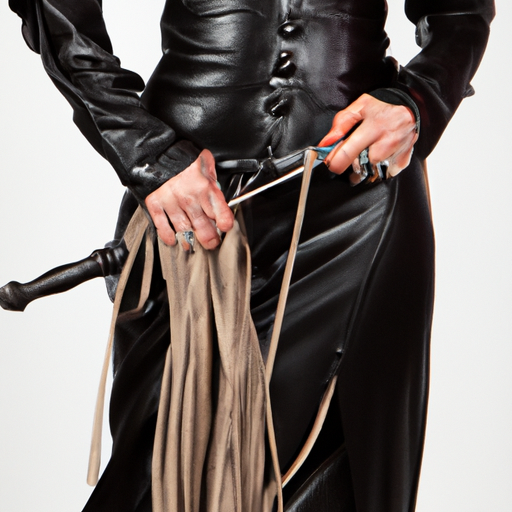Are you curious about the traits of a sissy man? If so, you’ve come to the right place. In this blog post, we will explore the concept of a sissy man and delve into the various traits that are often associated with this term. It’s important to note that this discussion is purely educational and informational, and should not be used to judge or discriminate against individuals based on their personal characteristics or preferences.

Before we begin, let’s clarify what the term ‘sissy man’ means. The term ‘sissy’ is often used to describe a man who does not conform to traditional gender stereotypes or societal expectations of masculinity. It is important to note that being a sissy man is not inherently negative or derogatory. It simply means that the individual may express themselves in ways that are not traditionally considered masculine.
One trait commonly associated with sissy men is their choice of clothing and style. Sissy men often embrace fashion choices that defy traditional gender norms. They may opt for clothing that is typically associated with femininity, such as dresses, skirts, or colorful and flamboyant outfits. It is important to remember that personal style is subjective, and everyone should have the freedom to express themselves through their clothing choices, regardless of gender.
Another trait often attributed to sissy men is their behavior and mannerisms. Sissy men may exhibit more feminine characteristics in their speech patterns, gestures, and overall demeanor. For example, they may have a softer voice, use more expressive hand gestures, or display more sensitivity and empathy in their interactions with others. Again, it is crucial to remember that these behaviors do not determine a person’s worth or should be used to stereotype or discriminate against them.
Sissy men may also have interests and hobbies that are traditionally associated with femininity. They may enjoy activities such as fashion, makeup, dancing, or artistic pursuits. It is important to recognize that these interests do not define a person’s masculinity or femininity. Everyone has unique preferences and should be allowed to explore their passions without judgment or societal pressure.
One vital aspect to remember when discussing the traits of a sissy man is the importance of acceptance and inclusivity. Society is evolving, and traditional gender roles and expectations are being challenged. It is essential to create a world where individuals can express themselves authentically, free from discrimination or prejudice. Embracing diversity and understanding that there is no one-size-fits-all definition of masculinity or femininity is crucial for fostering a more inclusive and accepting society.
In conclusion, the traits associated with a sissy man are subjective and vary from person to person. It is essential to approach this topic with an open mind and without judgment. Everyone has the right to express themselves authentically and should not be subjected to discrimination or stereotypes based on their personal characteristics or preferences. Let us strive for a society that celebrates diversity and embraces individuals for who they truly are. DominatrixCam.net.
How do top fetish models handle situations where their personal boundaries are challenged or crossed?
In the world of fetish modeling, where individuals explore their unique desires and fantasies, it is crucial for models to establish and maintain personal boundaries. While these boundaries may vary from person to person, the importance of ensuring they are respected cannot be overstated. In this blog post, we will delve into how top fetish models handle situations where their personal boundaries are challenged or crossed.

Clear Communication: Effective communication lies at the heart of any successful relationship, and the fetish modeling industry is no exception. Top fetish models understand the significance of clearly articulating their boundaries right from the start. They openly communicate their limits, needs, and expectations to their clients, partners, and collaborators. This helps create a foundation of mutual understanding and respect, reducing the likelihood of boundary violations.
Pre-Session Negotiations: Before engaging in any fetish modeling session, it is vital for models to engage in thorough negotiations with their clients or partners. These discussions cover specific activities, limits, and boundaries. Top models take the time to discuss what is and isn’t acceptable, ensuring both parties are on the same page. By establishing these ground rules beforehand, models can navigate sessions with confidence, knowing their boundaries are respected.
Trustworthy Partnerships: In the fetish modeling industry, models often collaborate with photographers, videographers, and other professionals. Top models prioritize working with individuals who have a solid reputation for respecting boundaries. They thoroughly research potential collaborators, seeking out testimonials and recommendations. By surrounding themselves with trustworthy partners, models can feel secure in their working relationships, minimizing the risk of boundary violations.
Consent and Safewords: Consent is the cornerstone of any healthy and respectful interaction, and fetish modeling is no exception. Top models prioritize acquiring explicit and ongoing consent from all parties involved. They establish a system of safewords or signals to ensure clear communication during a session. Safewords act as a safety net, allowing models to halt the activity if their boundaries are pushed or crossed.
Continuous Self-Reflection: Self-reflection is a crucial aspect of personal growth and boundary maintenance. Top fetish models regularly engage in self-reflection to assess their comfort zones, identify any potential shifts in their boundaries, and ensure they are aligning their personal and professional growth. By being aware of their own needs and limits, models can navigate the industry with confidence and assertiveness.
Support Networks: Building a support network is essential for models in the fetish industry. Top models surround themselves with like-minded individuals who understand the unique challenges they face. They seek out mentors, fellow models, or support groups to share experiences, seek guidance, and receive emotional support. These networks provide a safe space for models to discuss boundary-related issues and receive advice on how to address them effectively.
Professional Boundaries: Beyond personal boundaries, top fetish models also establish professional boundaries. They maintain a clear line between their personal and professional lives, ensuring they are not compromising their well-being or privacy. Models set limits on the type of content they are comfortable creating, the platforms they use for promotion, and the extent to which they engage with fans or clients.
In conclusion, top fetish models prioritize their personal boundaries and take proactive steps to ensure they are respected within the industry. Through clear communication, pre-session negotiations, trustworthy partnerships, consent and safewords, self-reflection, support networks, and professional boundaries, models navigate their careers while maintaining a sense of personal agency and well-being. By following these practices, models create a safer and more respectful environment for themselves and those they collaborate with, ultimately contributing to the growth and evolution of the fetish modeling industry.


